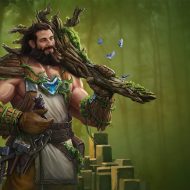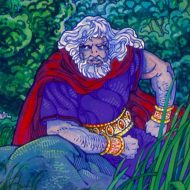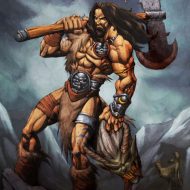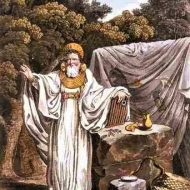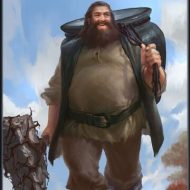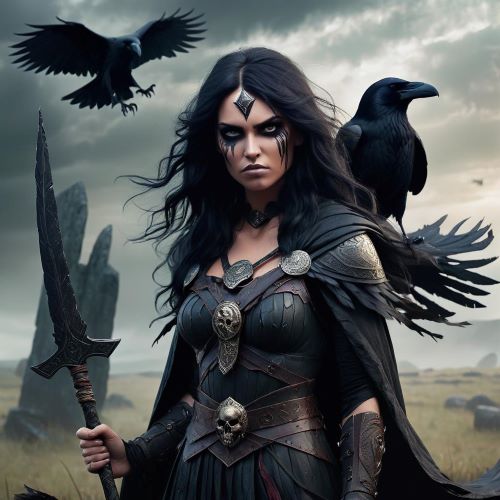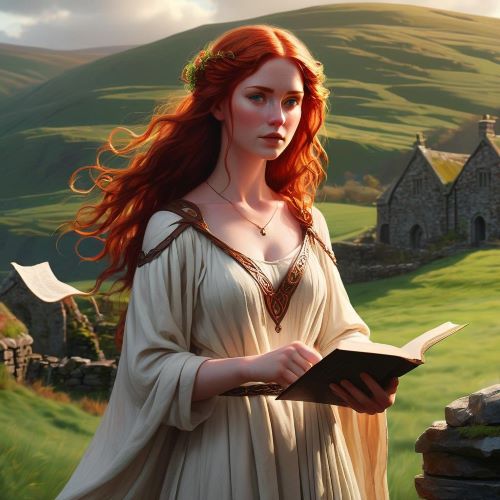Dagda : The Father God
Listen
At a glance
| Description | |
|---|---|
| Origin | Celtic Mythology |
| Classification | Gods |
| Family Members | Eithne (Mother), Balor (Grandfather), Lugh (Brother), Morrigan (Wife), Brigit (Daughter), Cermat (Son) and Angus Og (Son). |
| Region | Ireland |
| Associated With | Fertility, Agriculture, Strength, Magic, Wisdom |
Dagda
Introduction
Dagda was an Irish god who was part of a group of Irish gods known as the Tuatha Dé Danaan. He was regarded as the father of the gods and was known for his knowledge and good nature. He is often referred as “The Dagda”
The legend of Dagda states that he is a god of the earth, knowledge, harvest, time and fate. He is known to possess knowledge and wisdom that was frequently used to help the mortals. He is also depicted as a wanderer who spreads happiness and sense of wonder among the mortal world of Ireland & Scotland.
Physical Traits
The Dagda was a giant of a man with long and unruly beard. He wore a woollen cloak around his head and his clothes never fit him right with his belly and buttocks being frequently exposed. This however did not take away his good looks.
It has been theorized that the Dagda’s gruff appearance was created by the Christians who recorded Irish folktales. These early historians wanted to make him appear foolish and humorous when compared to their deity Jesus Christ.
Family
The Dagda is the son of Eithne, who is the daughter of Balor, the leader of the Fomorians. He is also considered the brother of Lugh, who ruled Ireland for 40 years.
The Dagda has a daughter named Brigit, who is a powerful force of fertility. His most famous sons are Cermat and Angus Og, who have represented youth, beauty, and maybe even love.
The Dagda is the husband of Morrigan, who referred to as his “envious wife”. He has two brothers, Nuada and Ogma. In the Dindsench, the Dagda is given Ainge, a daughter who is known for her ability to keep a twig basket or bathtub leaking when the tide is in but not when it is out. Dagda is also said to be the son of Elatha and grandson on Delbeath. His other wife is known as Elcmar and Echtgi is the another daughter that is mentioned in the Banshenchas.
Other Names
The Dagda has various names or epithets that reflect the various aspects of his character. Some of these include Eochaid Ollathair, Ruad Roftessa, Fer Benn, Daire, Aed, Cera, Cerrce, Easal and Eogabal.
Powers and Abilities
Dagda had a variety of objects that were associated with power and position. The Dagda was known for his various powers, including a caldron that were never empty allowing him to feed as many people as possible and everladen fruit trees. He also had two pigs that were always ready to be eaten.
He also had a large club that could kill both men and animals. It is said that one of the ends of the club can kill 9 men in a single swing while the other end can revive people from the dead. He is also in possession of a harp that can be used to change seasons based on the song he plays.
Modern Day Influence
The Dagda has also appeared in various other pop culture works. In Dungeons & Dragons, he was often portrayed as a leader of a Celtic pantheon. He was also featured in the game’s Scion role-playing game. In Marvel Comics featuring Thor, he is represented as an equivalent to Odin in the Celtic pantheon.
Related Images
Frequently Asked Questions
What is Dagda the god of?
The Dagda, a prominent figure in Irish mythology, is not associated with just one domain, but rather presides over a wide array of aspects. He’s often referred to as the “Good God” or the “Great God” and embodies a complex and multifaceted nature.
Who is the strongest Celtic god?
The Dagda wields immense physical strength with his magical club, Curved Oak, capable of killing and reviving warriors. He also possesses the Cauldron of Plenty, brimming with endless food and sustenance, showcasing another form of power – ensuring the prosperity of his people.
Why is Dagda called the All Father?
Dagda isn’t “All-Father” in the literal sense of fathering everyone. Instead, he’s called “All-Father” (Eochaid Ollathair) because he’s the leader and protector of the Tuatha Dé Danann, acting as a father figure for the Irish gods. He embodies fertility and agriculture, ensuring the abundance of the land and thus, providing for all.
What are the signs of the Dagda?
The Dagda’s signs whisper in symbols: feasts overflowing, oaks whispering old wisdom, a harp’s melody weaving magic, a chieftain’s strength, and perhaps, a cheeky wink from a giant etched in earth.
Who did Dagda fight?
The Dagda’s greatest foes were the Fomorians, chaotic sea giants! He battled them for land and magic, wielding his club, bottomless cauldron, and enchanting harp.

